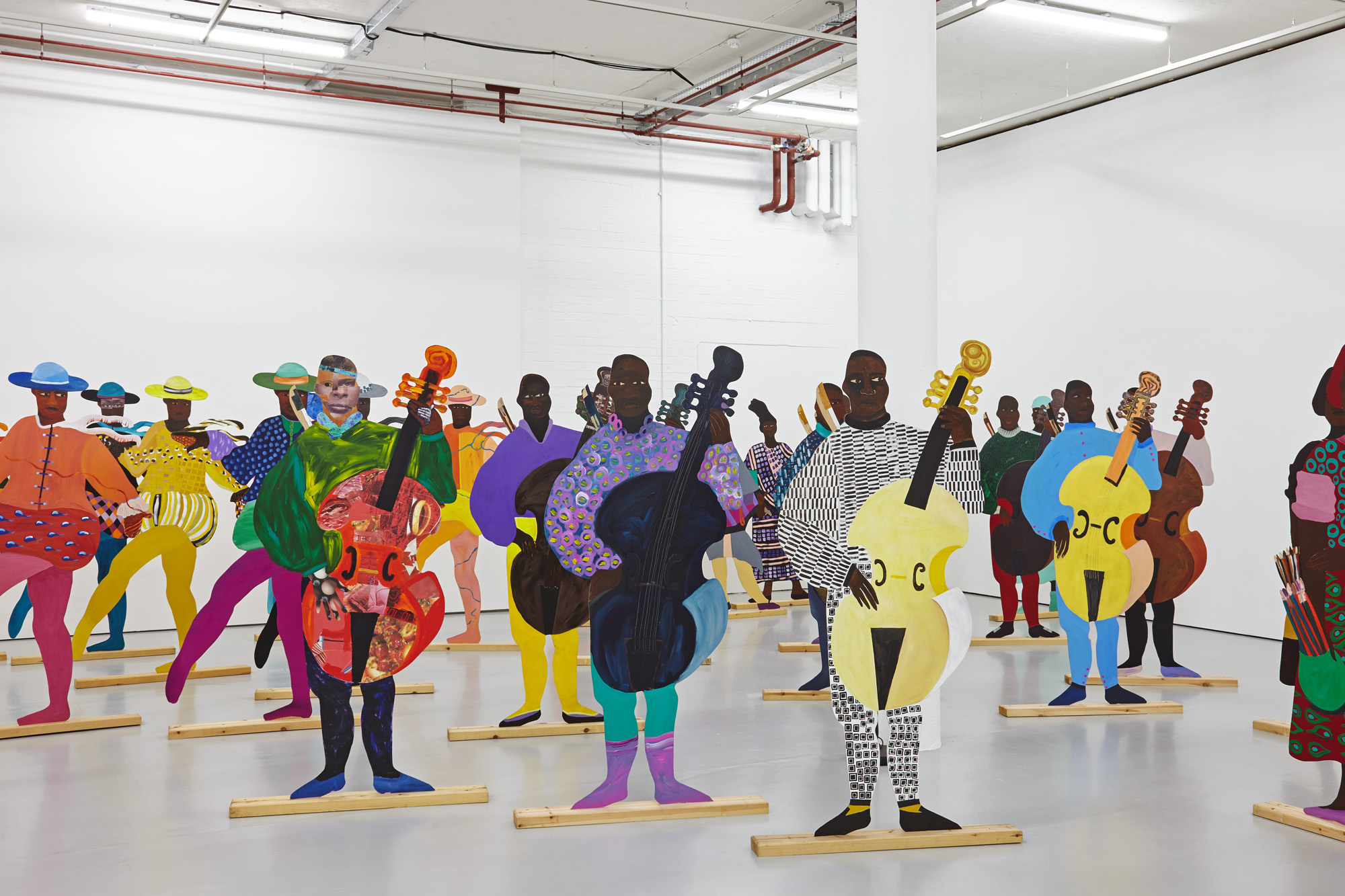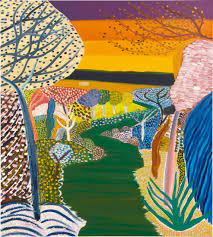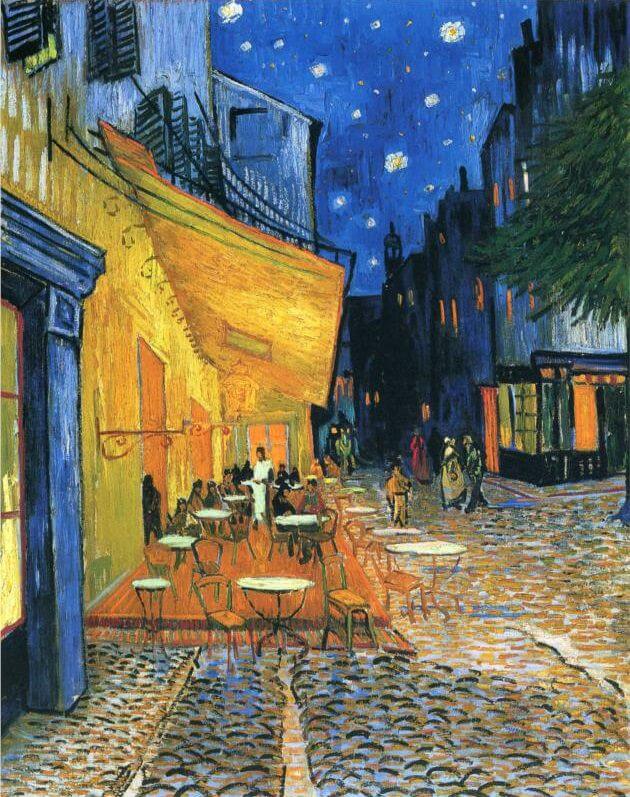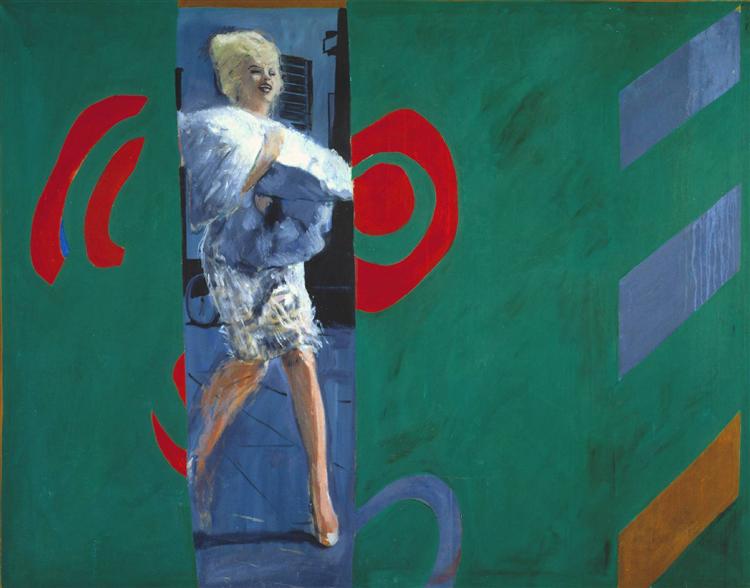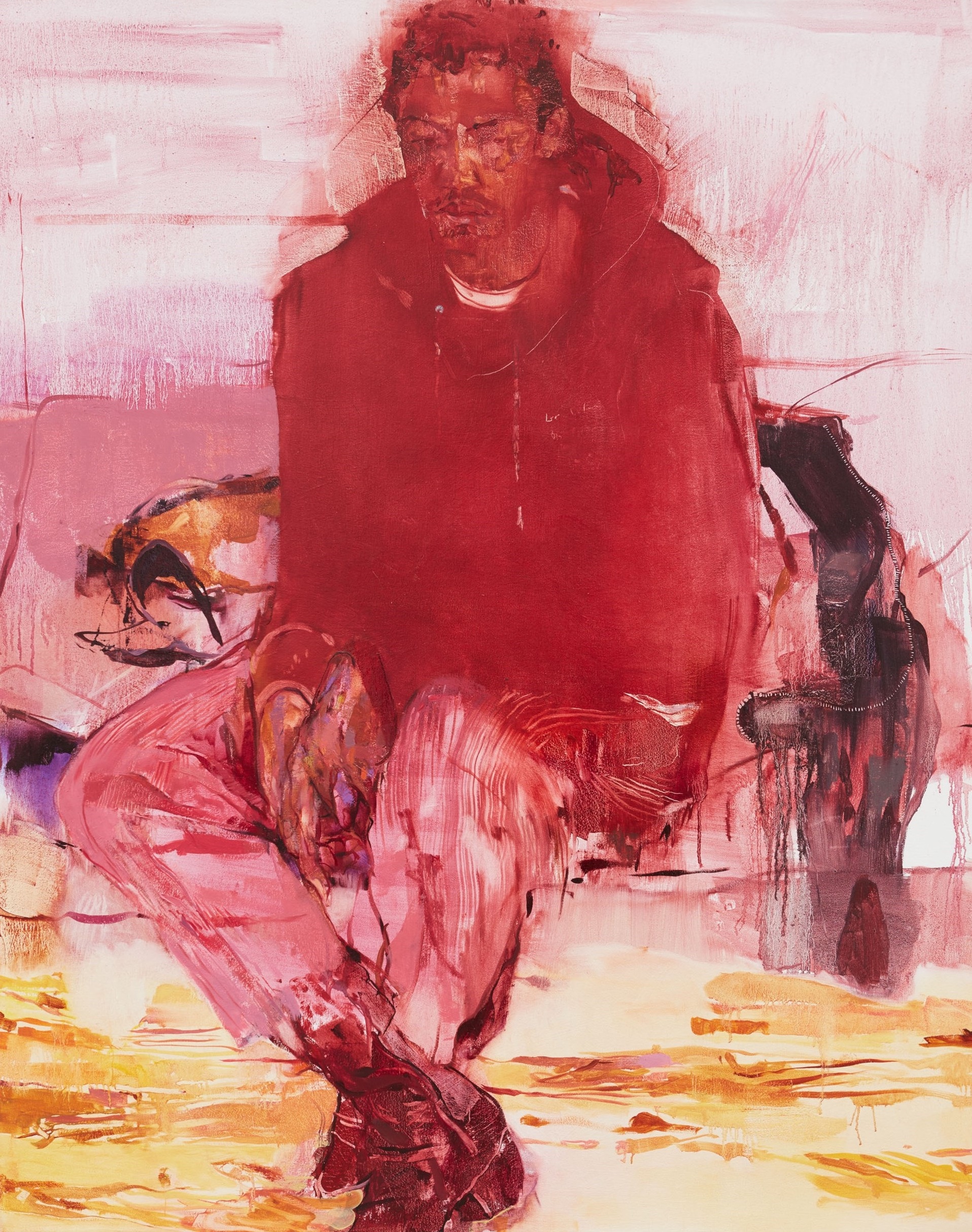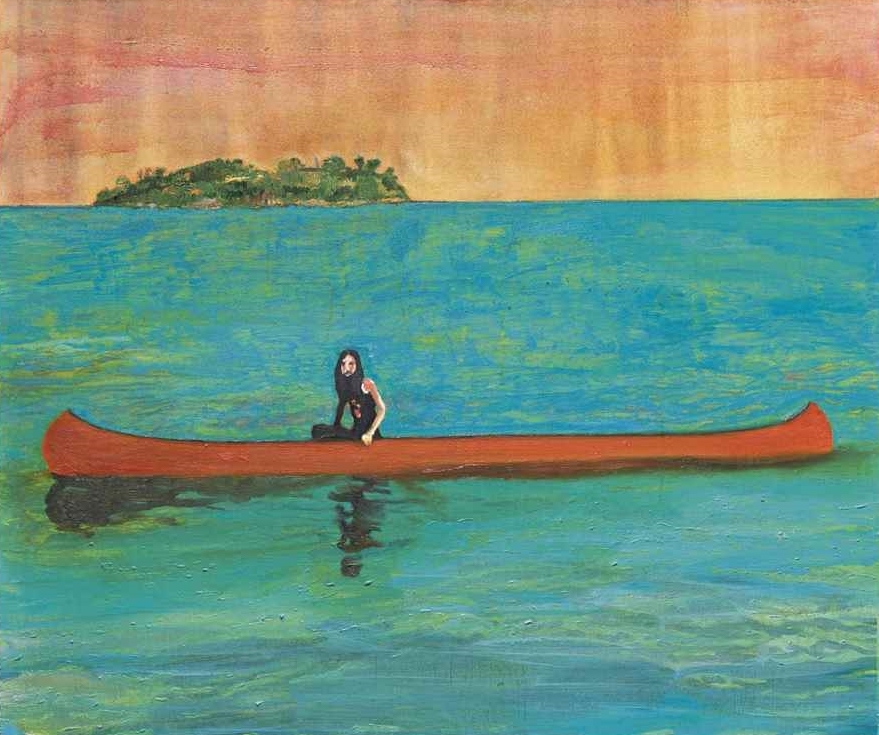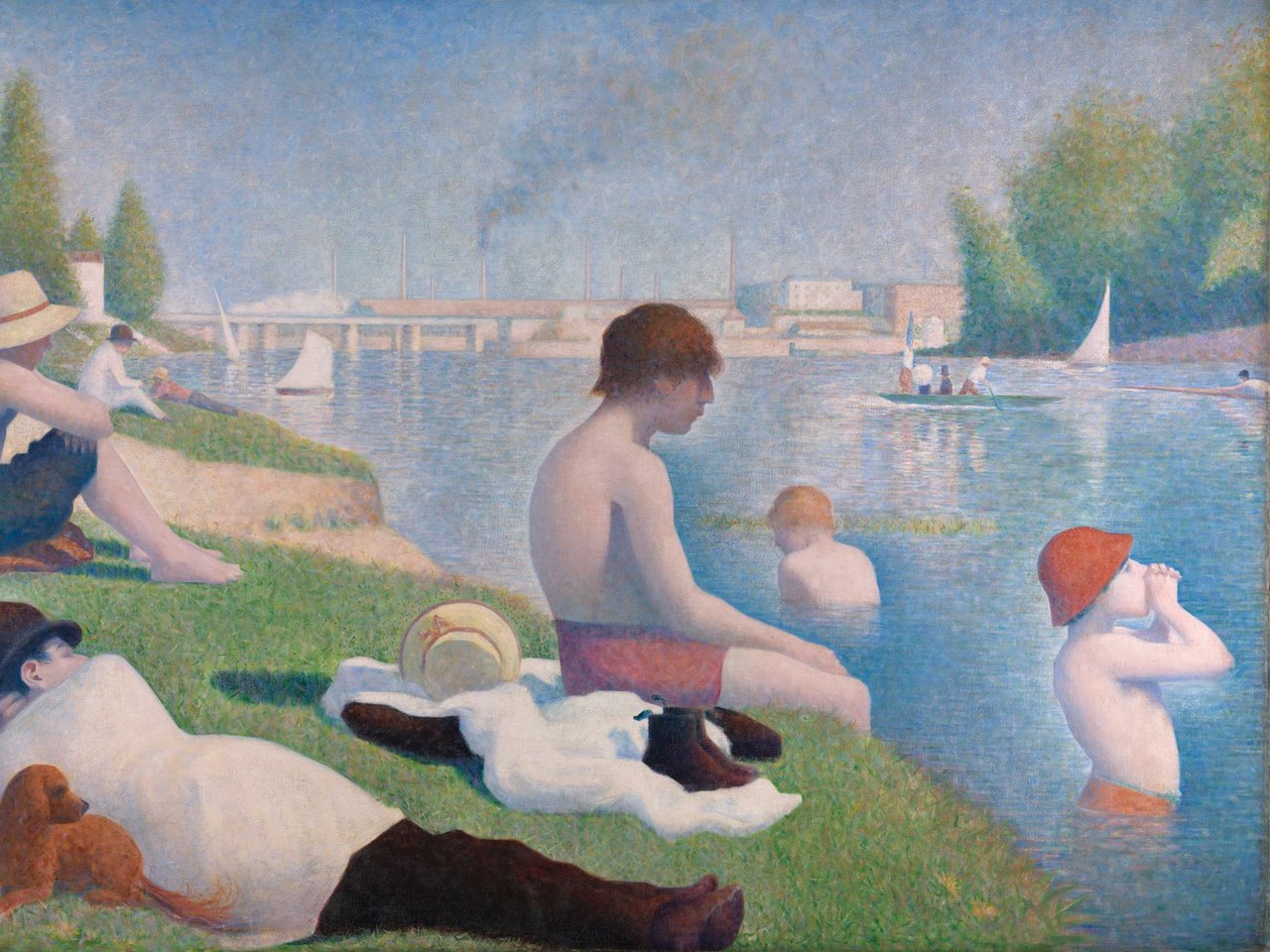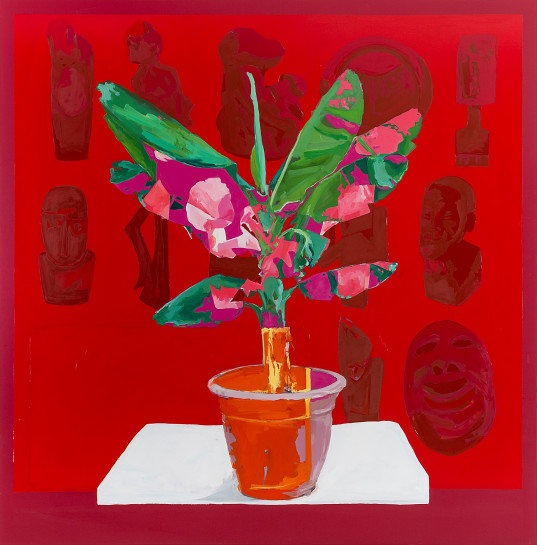
Discover Kudzanai-Violet Hwami, Antennae to the Ancestors, 2018
Kudzanai-Violet Hwami is one of the hottest artists in London right now. The young Zimbabwean held her first solo show at London’s Tyburn Gallery in 2017. In 2019, at just 26 years old, she represented Zimbabwe at the 58th Venice Biennale, and in December last year she made her auction debut, with her psychedelic mushroom trip portrait Eve on Psilocybin selling for $252,000, more than six times the high estimate.
Now she’s enjoying her first solo exhibition at Victoria Miro London. On display are a selection of her bright, energetic canvases celebrating the complexities of diasporic identities, gender and sexuality. Among them is this painting, Antennae to the Ancestors (2018), which features Shona sculptures behind a digitally manipulated plant. ‘There was a spiritual meaning behind that painting,’ the artist once said. ‘Plants have become symbolic gateways.’
Now she’s enjoying her first solo exhibition at Victoria Miro London. On display are a selection of her bright, energetic canvases celebrating the complexities of diasporic identities, gender and sexuality. Among them is this painting, Antennae to the Ancestors (2018), which features Shona sculptures behind a digitally manipulated plant. ‘There was a spiritual meaning behind that painting,’ the artist once said. ‘Plants have become symbolic gateways.’
Share





